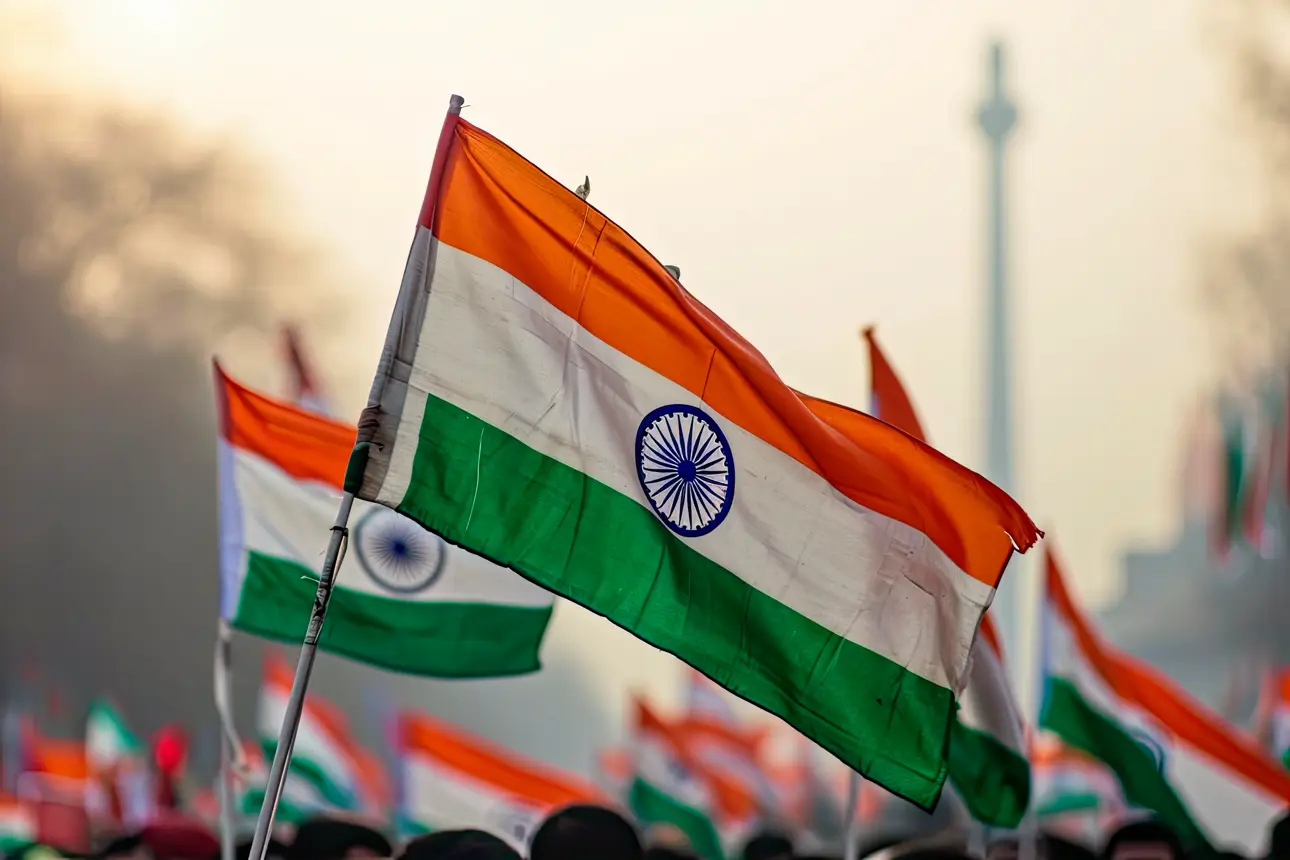Work Permit India: The Complete 2025 Guide for Talent and Employers
At Aniday, we work closely with global professionals and employers expanding into India. One of the first questions we hear is: “How do I legally work in India?”
Navigating permits, visas, and employer obligations can feel overwhelming.
We created this guide to simplify the process. If you are a candidate, you’ll learn whether you qualify for a work permit, what documents are needed, and how to avoid common mistakes. If you’re an employer, we’ll outline compliance rules, hiring timelines, and how to onboard foreign talent smoothly
What the India Work Permit Is
India does not issue a standalone “work permit” card. The core route for foreign nationals to work in India is the Employment (E) Visa. Related categories include the Project Visa (a project-tied authorization, historically used for specific sectors) and niche categories such as research or internships. Overseas Citizens of India (OCI) may live and work in India with restrictions on particular government posts.
Key features:
- Employment (E) Visa: Issued by Indian Missions/Posts abroad; typically granted for up to 1 year or the contract term, whichever is shorter, and extendable in India by FRRO/FRO up to a total of 5 years from initial issue.
- Project Visa: Project‑specific authorization; validity and entries are linked to the approved project and scope.
- e‑Visa note: India’s e‑Visa program (tourist/business) does not cover employment—you need an Employment Visa issued by a Mission.
- OCI: OCI cardholders can work in India but are generally ineligible for certain public service posts.

Who Qualifies for a Work Permit in India?
Eligibility for the Employment (E) Visa focuses on skilled roles and compensation thresholds:
- Skilled role: The role should require specialized skills/qualifications and not be routine or clerical.
- Minimum salary: USD 25,000 per annum (or INR equivalent), excluding in‑kind benefits; limited exceptions exist (e.g., certain language teachers, ethnic cooks, embassy staff, some academic posts).
- Employer sponsorship: Typically an Indian entity (or an entity executing a project in India) must sponsor the application.
- OCI: OCI cardholders can be employed in India subject to limitations on certain public roles.
Application Process Step by Step
-
Sponsorship & offer: Secure an offer/contract from an Indian company detailing the role, term, and salary meeting the threshold.
-
Gather documents (may vary by Mission): Employment contract and offer letter; employer’s corporate registration documents; educational/professional credentials (often apostilled) matching the role; undertaking regarding Indian tax liability; passport, photos, completed visa application, and fees.
-
Apply at the Indian Mission/Post: Submit the Employment (E) Visa application through the Mission/outsourced center serving your country of residence. Initial validity is typically up to 1 year or the contract term.
-
Travel, register, and obtain Residential Permit: If your E‑Visa is valid over 180 days, register with FRRO/FRO within 14 days of arrival via e‑FRRO to receive your Residential Permit. If visa validity is 180 days or less, registration is generally not required.
-
Onboarding compliance: Obtain PAN for tax, complete local address documentation, and check EPF (social security) obligations for “International Workers” where applicable, or any Social Security Agreement (SSA) to avoid double contributions.
Processing Times and Validity
- Processing time: Commonly about 1 week when documents are in order (varies by Mission and nationality).
- Initial validity: Up to 1 year or contract term; multiple entry typically allowed.
- Extensions: FRRO/FRO may extend in India year‑to‑year up to a total of 5 years from initial issue, co‑terminus with employment and compliant registration.

Employer Responsibilities
Employers sponsoring foreign talent should:
- Justify the hire & role: Skilled position not easily filled by local labor; maintain job description and proof of need.
- Meet the salary threshold and issue a compliant employment contract/offer letter.
- Provide onboarding support: e‑FRRO registration, PAN, local address documentation; ensure timely visa extensions.
- Payroll & taxes: Withhold and remit income tax (TDS); assess EPF coverage for International Workers and check SSA applicability.
- Project Visa use: If using the Project Visa route, ensure the assignment strictly aligns with the approved project and sector.
Common Mistakes and How to Avoid Them
-
Missing the salary floor: offers below USD 25,000 (or INR equivalent) are commonly refused—benefits in kind don’t count toward the minimum.
-
Routine/clerical roles: Employment Visas aren’t for ordinary jobs—ensure the role is demonstrably skilled.
-
Skipping FRRO registration: holders of E‑visas valid over 180 days must register within 14 days—use e‑FRRO to avoid delays.
-
Wrong visa channel: e‑Business/e‑Tourist are not employment authorizations—apply for an Employment Visa before travel.
-
Project Visa misuse: Treating a Project Visa like a general work visa can lead to violations. Keep it project‑bound.
Real-World Scenarios
-
US software architect hired by a Bengaluru unicorn: Offer at USD 140,000 clearly exceeds the threshold. The company issues a detailed contract and corporate docs; the candidate applies for an Employment Visa, receives 1‑year validity, registers via e‑FRRO within 14 days, obtains a Residential Permit and PAN, and is assessed for EPF as an International Worker (SSA checked to avoid double contributions).
-
German engineer on a turbine installation project: Deployed to India on a Project Visa tied to a specific power project. HR ensures no cross‑assignment to other projects and tracks visa validity to the project timeline; all work remains within the approved scope.
-
OCI cardholder joining a research lab in Pune: With an OCI card, the professional can live and work in India but is generally not eligible for certain government posts; employer onboards via standard PAN/tax process; no Employment Visa is needed.
FAQs
Is there a minimum salary for India’s work visa? - Yes. For most roles, USD 25,000 per year (or INR equivalent) is the floor; limited exceptions exist (e.g., certain language teachers, ethnic cooks, embassy staff, some academic posts).
How long is the Employment Visa valid? Can I extend it? - Missions typically issue up to 1 year or contract term initially; FRRO/FRO may extend year‑to‑year up to a total of 5 years from first issue, subject to continued employment and compliance.
Do I need to register after arriving in India? - If your E‑Visa is valid over 180 days, register with FRRO/FRO within 14 days (use e‑FRRO). Visas of 180 days or less generally do not require registration.
Can I work on an e‑Business or e‑Tourist visa? - No. Employment requires an Employment (E) Visa issued by a Mission.
What’s the difference between a visa and a permit in India? - India’s work authorization is the Employment Visa plus registration/residential permit for longer stays; there isn’t a separate, standalone work‑permit card.
Who can sponsor me? - Generally an Indian employer (or entity executing a project in India).
What about social security (EPF)? - Foreign employees in EPF‑covered establishments are usually treated as International Workers—EPF may apply unless exempted under a Social Security Agreement.
Can my family come with me? - Eligible dependants typically apply for Entry (X‑Misc)/dependent visas tied to the principal’s E‑Visa validity; they must also follow registration rules if their stay exceeds 180 days.
How long does processing take? - Many Missions indicate around a week if documents are complete; timelines can vary by nationality and case complexity.
Is the Project Visa a shortcut to work in India? - No. It is project‑specific with strict limits and is not a general employment route.

How Aniday Helps
Whether you’re hiring your first engineer in Bengaluru or mobilizing a site team on a project visa, Aniday streamlines every step:
- Headhunting: Senior tech and hard‑to‑hire specialists across India’s hubs.
- Employer of Record (EOR): Hire compliantly without opening a local entity; we manage contracts, payroll, tax, and benefits.
- Professional Employer Organization (PEO): Co‑employment model for established entities seeking HR scalability.
- Payroll & HR Ops: Indian payroll execution, TDS, EPF administration for international workers, and FRRO coordination.
Explore our services: Headhunting India, EOR India, PEO India, Payroll India.
Conclusion
Securing a work permit in India is often the key step to building a compliant and sustainable career or workforce. At Aniday, we make the process clearer and safer for both talent and employers—so you can focus on growth instead of red tape.
Note: Rules can change. Before filing, verify the latest requirements with the relevant Indian Mission and the e‑FRRO portal.
Aniday's HR Services
Headhunting Service
Find and recruit quality candidates in just 1 week! Supported by 40,000 experienced headhunters in IT, Finance, Marketing… capable of recruiting in any region.
Headhunting Service ➔Employer of Record (EOR) Service
On behalf of your business, we recruit employees and handle payroll without the need to establish a company in markets such as Vietnam, Singapore, Malaysia, India, Indonesia…
Employer of Record (EOR) Service ➔